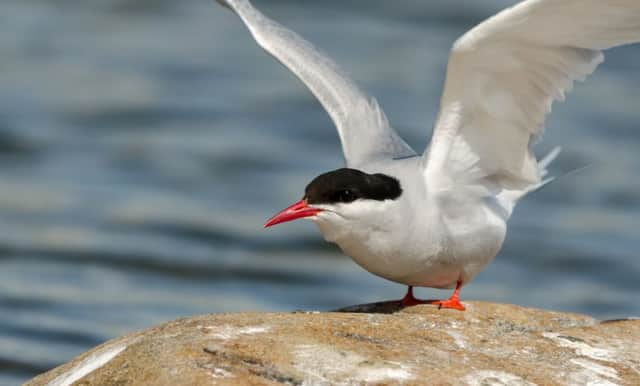Bird found dead in Scotland was UK’s oldest Arctic tern


First ringed as a chick at Buddon Ness in Angus, the tern was discovered at the Scottish Natural Heritage (SNH) Forvie National Nature Reserve in Aberdeenshire.
The bird was found to be 32 years old, almost to the day, when it died, which is more than double the average tern lifespan of around 13 years.
Advertisement
Hide AdAdvertisement
Hide AdThe previous record holder was a tern recaptured on the Farne Islands, off the coast of Northumberland, in 2010, just over 30 years after being ringed as a chick.
Arctic terns are among the most remarkable birds that visit Scottish shores. Their pole-to-pole migration is the longest known annual journey by any animal.
By moving continually between Arctic summer and the Antarctic summer, terns see more daylight than any other creature on earth.
Clocking up up to 44,000 miles each year, the record-breaking bird may have flown up to 1.408 million miles during its lifetime.
Daryl Short, Reserve Officer at Forvie, who found the deceased bird, said: “It’s incredible to think that the bird I found flew the equivalent of to the moon and back, and then back to the moon and some way home again.
“Arctic terns are amazing animals. The birds are currently protecting their chicks at Forvie and other nature reserves around the country and they’re not afraid to give you a bump on the back of the head if you get too close to their nests.
“But unfortunately for them, terns are prey for some other seabirds, such as falcons and large gulls.
“So there was certainly an element of luck to this bird’s long life.”
Advertisement
Hide AdAdvertisement
Hide AdThe record-breaking tern will have survived predators, storms and food shortages to possibly parent well over 50 chicks. It probably travelled well over a million miles in its lifetime.
Stuart MacQuarrie, head of nature reserves for SNH, said: “This incredible little bird was first ringed on a Special Area of Conservation and found again 32 years later, not too far away, on one of our national nature reserves.
“As well as evidence that the bird regularly returned to this part of Scotland to rear its chicks, this shows the importance of protected areas and nature reserves for wildlife.
“Scotland’s nature reserves are beautiful places for people to visit. They are also carefully managed for conservation and important places for research, making a real contribution to tackling biodiversity loss.
“Our reserves constantly surprise and delight in equal measure and this little bird captures something of what makes them so special.”